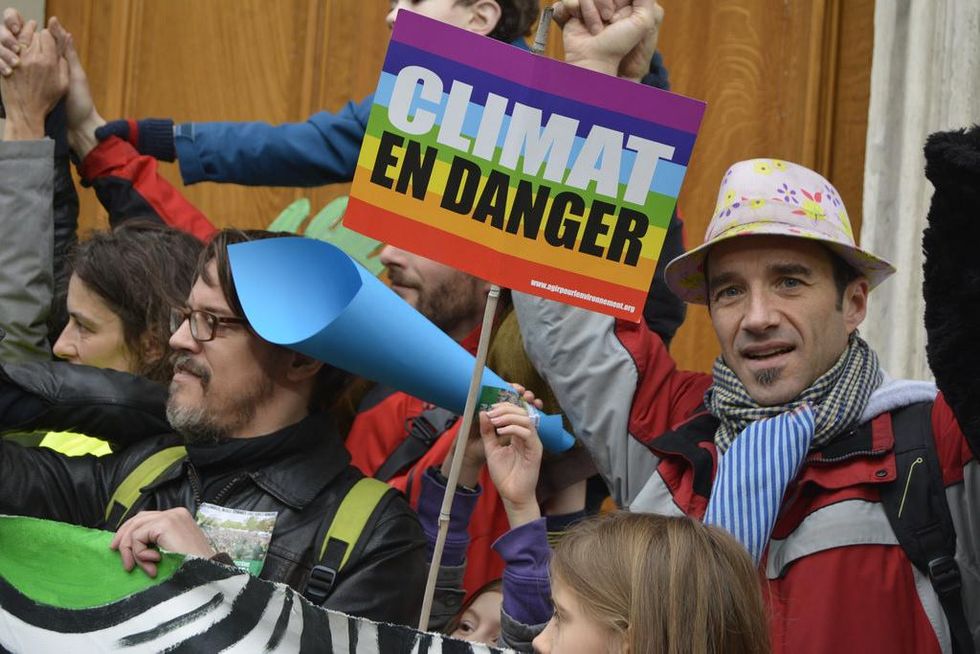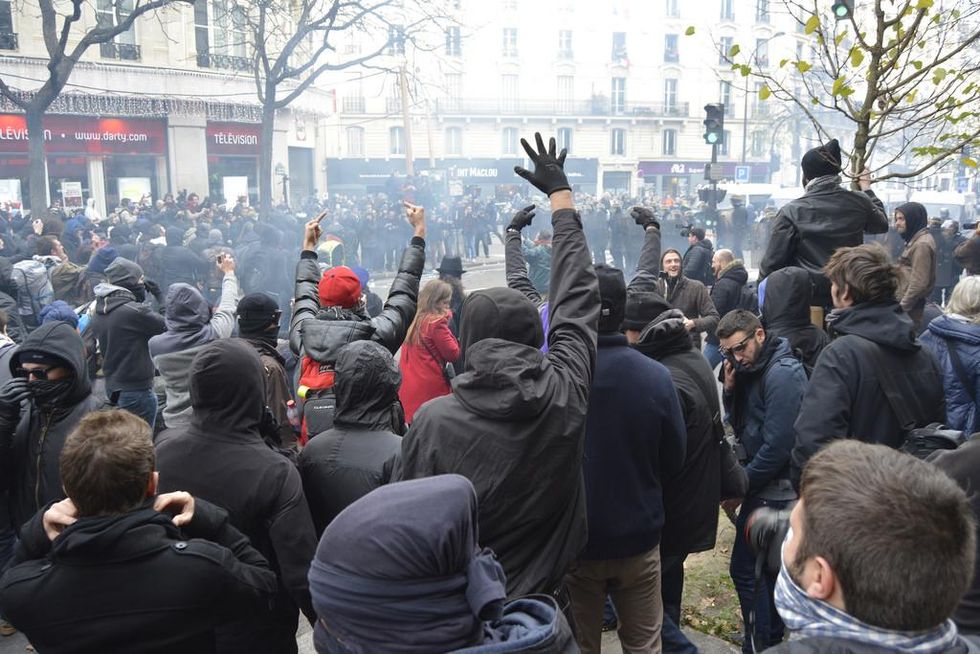France's human rights ambassador Patrizianna Sparacino-Thiella, marked the initial announcement last year as "a further contribution to recognizing France's commitment to facing up to its historic responsibilities." After 70 years, the French foreign ministry admitted that France was responsible and would "assume the consequences."
And here we are, on the road to the Paris Climate Summit--with poor countries on the edge of an unraveling planet, demanding in ever louder voices some kind of reparations for the unavoidable, inevitable destructions that wealthier, carbon-polluting nations have wrought upon the world.
"Loss and damage is part of the climate justice we are asking for. We are at the brink of survival while rich countries continue to pollute and harm us. It needs to stop. We need to make them accountable." --Ayeen Karunungan, Philippines climate activistSpecifically, poor countries are fighting for a powerful agreement on what is called "Loss and Damage."
Loss and Damage refers to the waves and wildfires and other climate wrecking balls we can't stop anymore, largely because we've dragged our feet as a planet for over twenty years on climate action. It's about getting poor countries, who've contributed very little to the climate crisis some measures of justice for the climate impacts for which no level of preemptive "adaptation" can account.
Given its central importance among the world's most vulnerable countries, ActionAid's Harjeet Singh says a lack of progress on Loss and Damage could "absolutely" trigger a breakdown of the upcoming talks in Paris.
Ambassador Nozipho Mxakato-Diseko of South Africa, who leads the G77 + China bloc (134 developing nations), said "Loss and damage is not optional. We experience in our hearts the broad spectrum of climate change impacts. We are trying to see loss and damage have a role in this agreement."
Meanwhile, Ambassador Amjad Abdulla of the Maldives, who leads the 37-country Small Island Bloc, AOSIS, said Loss and Damage is a must have. "There has to be a home for loss-and-damage in the agreement."
The US, on the other hand, is not pleased about potentially paying up.
Todd Stern, the US climate envoy, told the press in late October that he supports Loss and Damage "as an idea" but said the United States, simply put, "is not going to accept compensation and liability being in the agreement."
Stern's words echo his message at the last iconic climate summit in Copenhagen in 2009, saying the U.S. would acknowledge responsibility, but not culpability. "We absolutely recognize our historical role in putting emissions in the atmosphere that are there now. But the sense of guilt or culpability or reparations, I categorically reject that."
If the U.S. and other wealthy allies like Australia and surprisingly Switzerland continue to insist on cleaving compensation from Loss and Damage, which seems very likely, the fight will be to salvage something that still gives the whole issue enough momentum to carry forward in the years ahead.
One battlefront involves getting rich countries to admit their historical responsibility for the glut of carbon emissions. Another front involves getting Loss and Damage out from under the "Adaptation" category in the UN framework, where it stands to be confused with preparing for the worst, instead of compensating for the unimaginable.
As the Angolan diplomat Giza Gaspar Martins, who leads the 48 least developed countries bloc, recently told Reuters: "(Loss and damage) is when you can no longer adapt to any potential change - that reality is deserving of special consideration."
A more tangible fight in the the Loss and Damage negotiations involves fighting for a UN climate refugee program--called "displacement coordination facility" in the UNFCCC lexicon--which could assist with emergency relief, migration support, and planned relocations for populations who are literally washed away, or whose crops just don't cut it anymore. (Something like this, one could aruge, may have been handy for the current Syrian refugee crisis.)
Negotiations will surely get heated, but all the negotiating in the world tends to overlook how very real the need for a Loss and Damage program already is.
Ayeen Karunungan, a Philippines climate justice advocate, felt Loss and Damage up close in late 2013.
Karunungan witnessed how Typhoon Haiyan, which claimed over 6,300 lives, devastated her home country of the Philippines. "I have met people who lost their whole family to Haiyan, who lost their whole agricultural lands, who were left with nothing," she said.
For Karunungan, the concept of Loss and Damage is a matter of justice, not for some later date, but for the here and now.
"If climate change is human induced, and it is, someone has to be responsible for all this damage," she continued. "Loss and damage is part of the climate justice we are asking for. We are at the brink of survival while rich countries continue to pollute and harm us. It needs to stop. We need to make them accountable."
When Yeb Sano, the Philippines negotiator took the stage at the climate talks in 2013, his words came in tears. After describing the "hellstorm"" of Haiyan that had just unleashed devastation upon his island home, he declared that it was "time to confront the issue of loss and damage."
"It is now too late, too late to talk about the world being able to rely on developed countries to solve the climate crisis," Sano declared. "We have entered a new era that demands global solidarity."
The same year Haiyan took 6,300 lives in the Philippines, the US spewed 6,673 million metric tons of carbon dioxide equivalents into the atmosphere, and while they were at it, showered $21.6 billion in subsidies on the fossil fuel industry.
Because of the bullish insistence by the U.S. and other wealthy nations against paying for the damage of historic pollution, the current Paris draft makes no mention of actual reparations or clear compensation language. As it stands, the G77 plus China bloc was able to squeeze different scenarios on Loss and Damage into brackets in the latest draft for future debate in Paris.
Almost all of the bracketed ideas on Loss and Damage are building blocks to further mechanisms and frameworks that may one day be able to deliver real support and perhaps real compensation. In other words, even if the G77 is able to move forward on their already weakened positions, it would take years or far more likely many painfully long decades to even build a working framework for doling out "measures of justice" for those who've lost everything.
It took well over half a century for one country to take responsibility and "assume the consequences" for something that was a very obvious evil--one not nearly as complex as getting the world's nations to match their historical carbon emissions with hunks of responsibility for a broken world, and then figure out shares of reparations and so on from there.
Unfortunately, we don't have 70 years for the survivors of a climate nightmare-made world. Knowing how long it took France to realize its latest reparations means Paris needs to find some equivalent to Godspeed on Loss and Damage.





